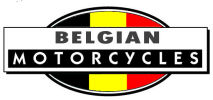




So neat is the Victory spring suspension that a second glance is necessary to realise that this Belglan-built Rush lightweight has not a rigid frame. Leaf and coil springs, a friction device, and a rubber buffer contribute to the design.
Two bronze bushes act as bearings and as a friction damping device for each link.
HAILING from Belgium, the Victory spring frame has many points of interest, and embodies advantages which are not immediately obvious to the casual observer. The manufacturers, Victory Constructions Mécaniques, S.A., 540, Chaussée de Waterloo, Bruxelles, who have arrived at the design after considerable experimental work, make notable claims for the device.
It will be seen that the rear wheel is carried in a short link pivoted from the rigid chain stays. The fork-ends of these links have wide faces, and are rigidly dogged to special axle members, so that no twist can take place, and the links on each side must rise and fall together. Enormous areas are provided for the bronze pivot bearings, and a web in the bearing is gripped between the faces of the two bronze bearings so as to provide a friction damping device and sideways location. Should side wear develop after long use, the location can be corrected by facing off a steel distance piece. Attached to either link is a short laminated spring having a loosely mounted extension bolt at the front end. This bolt passes through the chain stay, and is attached to a compression spring above the stay, a rubber stop being provided between the stay and the leaf spring.
Two rather unique claims are made by the inventors : (1) that the machine is actually steadier in grease than a rigid frame machine, and (2) that the upward motion of the rear wheel on striking a bump is balanced by the downward thrust of the leaf spring at the inner end of the chain stay and thus a minimum of shock is received by the frame and rider.
No spring frame will give a badly damaged road the smoothness of a billiard table, despite the claims of many enthusiastic inventors. At the same time we may fairly say that the Victory frame was at least as comfortable as any system of motor cycle suspension that we have yet tested, and the majority of them much more complicated designs.
During a short run over some very mixed roads, the frame, as fitted to a Rush lightweight, proved entirely satisfactory from every point of view. Potholes, taken at speed, are, of course, felt, but fail to produce any jar, and, what is even more important, zigzagging on greasy tramlines did not result in a skid. The machine held the road wonderfully, which is particularly noteworthy, since the riding position was thoroughly awkward, and unsuited to the writer.
It is the intention of the manufacturers to market the attachment in this country both as a conversion set for existing machines, and as a proprietary fitting for inclusion in standard models. We are informed that many Belgian machines are now fitted with the Victory spring frame, and many conversions have been made, which all have given great satisfaction.
The MotorCycle, December 22nd, 1921.